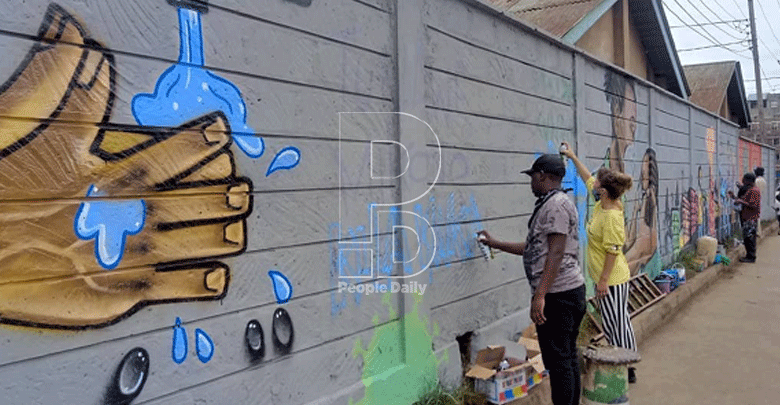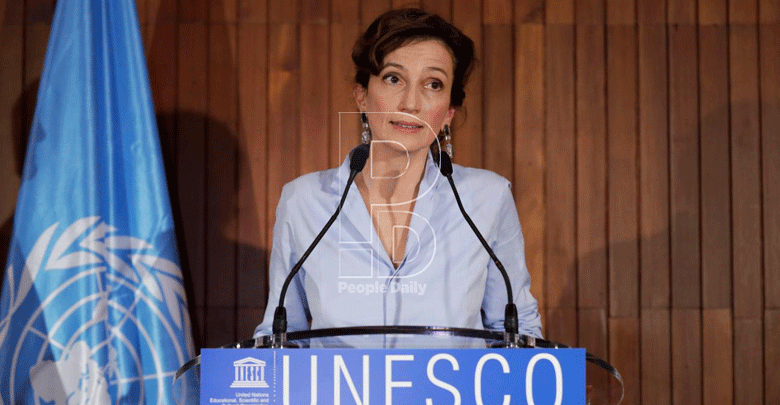Global coronavirus crisis has had many sectors begging for help

The global coronavirus crisis has had many sectors begging for help, and the creatives in the art industry have not been spared from the devastating effects of the pandemic. But as Harriet James writes, the sector is looking up after months of abject sufferation
The power of art, particularly during the Covid-19 pandemic, has been to bring people together, inspire, sooth as well as to pass on information.
Still in the face of all that, artists continue to innovate in the face of recent challenges and inspire the world around them to find new ways of connecting.
For artists such as Michael Musyoka, this was the time to create new work for the future, experiment with new series, and delve into long-term projects.
“The pandemic gave me ample time to create more paintings, move from my previous studio, which is a shared space, to work from home.
This move saved me the hustle and expense of going back and forth and afforded me more time and space to concentrate on my work,” says Michael, who was inspired to join the art industry by looking at graffiti in matatus.
When it comes to his work, he admits that the fear and uncertainty brought about by the pandemic was unsettling to his mental state. Painting is what revived his spirit.
“I sketched and painted a lot of my frustrations on paper and canvas, so at least I had an outlet.
I later showcased some of these artworks in a solo exhibition at One-Off Gallery over the course of September, which was impactful to my career,” adds Michael.
For Patrick Kinuthia, a semi-impressionist artist, the year 2020 was productive despite the doom and gloom.

“By God’s grace, I was still able to sell. I had a show at the Village Market that broke even, although the attendance was not as good as 2019,” he tells Spice.
Other skills
The period also forced him to learn money management. It also changed the perspective of many artists and made them use their talents to inform on the effects of the deadly virus, especially in the informal settlements where a majority of dwellers lacked access to proper information about Covid-19.
During the period though, graffiti artist Harrison Chege worked even more, installing murals and graffiti on the walls of key public places.
“As artists, we have been affected during the pandemic as our movement were restricted and galleries closed, which cut us off from interacting with our clients.
But we didn’t give up as through the mural installations we have created community awareness and depicted prevention measures,” he says
For digital artist and Benir Africa founder Timothy Gichuru, last year was a good one as he had a lot of collaborations as well as work opportunities.
It was also a year when he was awarded the best digital artist award for his work.
“I think every digital artist has an art piece regarding Covid-19. The challenge for me was the restriction in travelling.
I had a client who wanted an art piece in Diani, Kwale county, and it took so long for me to deliver because of the travel complexities,” says Timothy.
Future is digital
He adds that the pandemic has also accelerated the use of technology in the industry.
He projects that in the next 10 years, digital art is going to be the backbone of most of our day-to-day interactions in businesses, and that’s the market that he is positioning himself to tap into.

“I can say technology plays a huge role in digital art. It has forced me to have to purchase a really good graphics tablet and a computer that runs smoothly for efficiency at work.
The pandemic has also changed how work and meetings are done in relation to advertising and digital marketing, so instead of meeting physically, we usually schedule virtual meetings,” he notes.
Timothy also opines that in the future, more people will be inclined more towards digital art, leading to the rise in the number of artists who do such type of art.
He says, “I think more people are into this kind of art since the pictures are more manipulative.”
Players in the industry also had to adapt to a “new normal” as art fairs, exhibitions and workshops have been indefinitely on hold.
Despite the challenges facing the industry, the rise in demand of African art by the international market attention has resulted in the rise of new galleries that are more concerned on the model of sustainability.
In 2015, Danda Jaroljmek founded the Circle Arts Agency and Circle Art Gallery.
Located at the 910 James Gichuru Road in Lavington, Nairobi, it offers a pristine ‘white cube’ environment for carefully curated exhibitions.
They also provide an expert advisory service to potential and existing collectors.
For them, despite the challenges, they still managed to have exhibitions in 2020.
“Artists worked better in isolation due to the restrictions. We saw an increase in the online presence and received more orders from our clients here.

We also made videos for artists showcasing their works with us for the online audience,” she tells Spice.
Galleries are crucial, as they assist artists to showcase their work in a professional space with curatorial advice and for collectors to have somewhere to come to learn about the art scene in their country or region.
The continent faces challenges in access to information and this too makes them a vital space in guiding collectors as well as offering bespoke services for the collectors.
Patrick was also able to set up a gallery and engaged also in online sale activities.
This artist, who fell in love with art as a six-year-old, believes that one of the challenges facing artists at this time is visibility.
“If you ask anyone in Kenya to name a comedian they’ll probably name MC Jessy or Eric Omondi; they will name singers such as Sauti Sol or Kambua, or even an athlete such as Eliud Kipchoge.
But if you ask them to name a visual artist, very few know one. Government should create a ministry dealing with creative arts and also incorporate it in its different cultural and social programmes.
I also suggest that the government creates art shows in the diaspora where we have embassies, so that our art can be displayed and promoted,” he adds.
Timothy cites the Kenyans’ insatiable appetite for free stuff hampers the growth of the art industry. He says artists usually get regular requests for free samples.
“People don’t understand that it takes time and energy to do this, and time is money.
And sometimes reject the samples saying that’s not what they wanted,” he says, adding that even when they finally find clients, they still want to negotiate the prices despite the fact that their prices are affordable.
“It’s a hard task to get Kenyans to embrace digital art and understand the creative process.
It’s harder for digital art businesses to make it professionally as compared to making just one art piece for people to put in their houses.
People actually invest in that one piece than doing a digital branding for their business as they’ll say it’s too expensive,” says Timothy.
The support
On April 15, 2020, during the World Art Day, the United Nations Educational, Scientific and Cultural Organisation (Unesco) launched a global movement dubbed ResiliArt that aims at shedding light on the far-reaching impact of the pandemic on the art sector.
It comprised of a series of global virtual debates with renowned artists and encourages support for the cultural world throughout the crisis.
It also advocated for well-drawn guidelines on how to improve the protection of artists for future crises.
“Keeping art alive requires the twofold approach of supporting cultural professionals and institutions, and promoting access to art for all.
As these challenges require far-reaching cultural policies it will be necessary to “listen to the voices of the artistic world in their globality and diversity,” says Unesco director general Audrey Azoulay.














